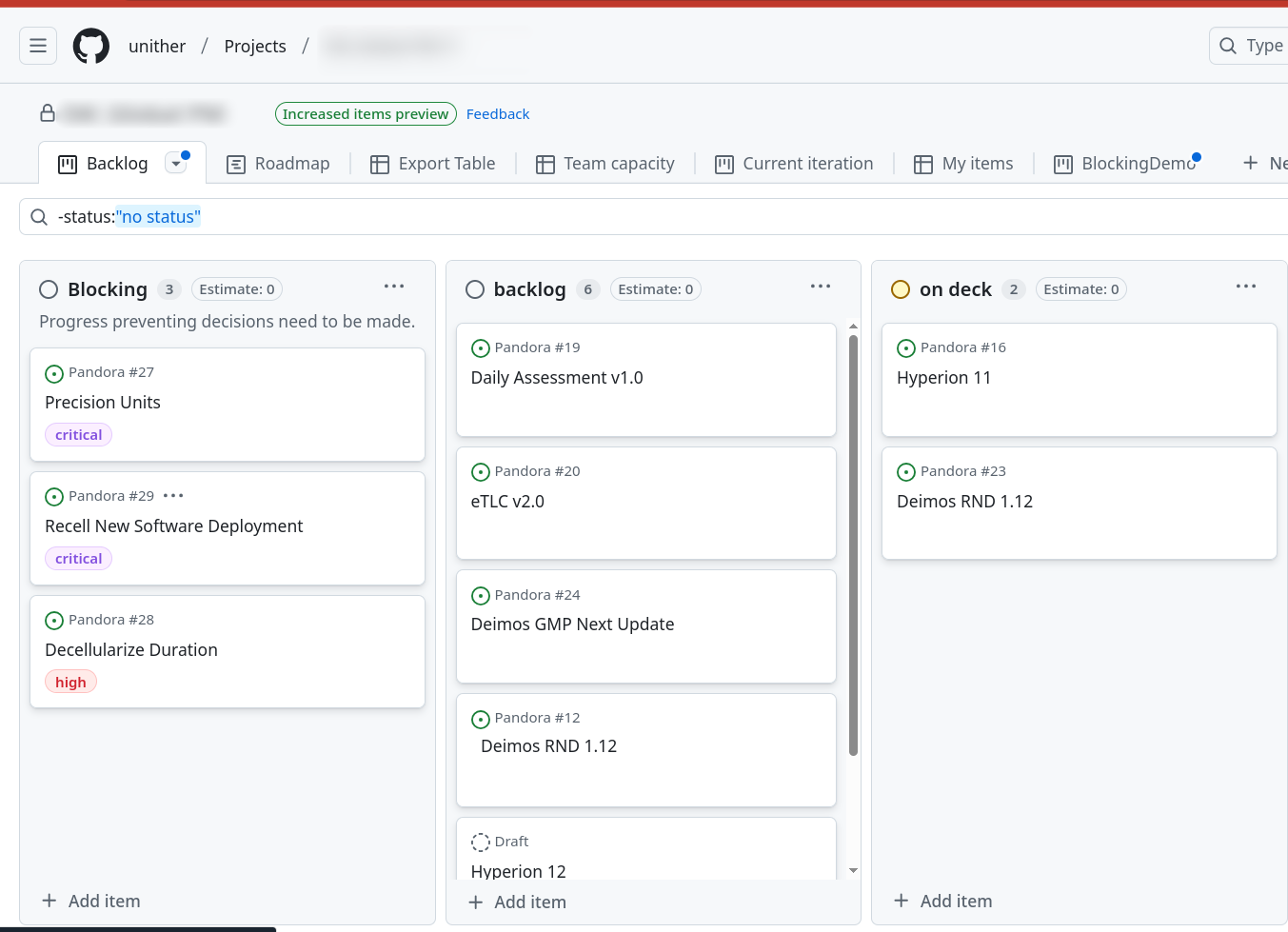Decision Inertia: Overcoming Stalled Progress in Agile R&D
March 5, 2025
Adapting the most relevant portions of agile methodology to the R&D software space presents unique challenges. Teams often undergo rapid increases in external dependencies, decision-making complexity, and delivery pressures. The traditional Kanban approach doesn't highlight the true bottlenecks in complex, multi-domain systems - unmade decisions.
Restructuring Kanban for Blocking, Focus, and Order
Existing Kanban boards need to be remade to place the emphasis on three critical factors:
- Blocking: What decisions or tasks are preventing progress?
- Focus: Where should the team's attention be directed?
- Order: What's the priority sequence?
Leverage the natural "F-pattern" reading behavior by positioning the most important items in the upper left. Make the first column on the left a dedicated "blocking column." To promote focus, remove badges from all other columns, with priorities determined solely by vertical order on the screen.
Visualizing Delay Impact
After completing the layout restructuring, introduce "delay impact" badges, but only for items in the blocking column. These badges represent the sum total of time-to-value and opportunity cost, making the consequences of inaction immediately visible.
Decision Log Accountability
Create a separate log specifically for tracking decisions with three key components:
- The decision itself
- The decision owner (responsible for gathering information)
- The decision maker (accountable for the final call)
Humanizing the Impact
Better results can be achieved by reframing the impact of delayed decisions with a human element. It's incredibly easy to look at a missed date on a Gantt chart and say "oh well, it's late." Contrast that with statements like:
"Two of our software engineers are unable to move forward until this decision is made."
"The scientists will be frustrated with the lack of data until we can decide on a precision level."
If-Then Decision Frameworks
Every decision now requires a simple if-then statement indicating the next steps. This If→Then framework is added to every communication where the decision is mentioned - verbally, on project boards, and in technical documentation:
- If the decision is X, then we will do Y.
- If the decision is Z, then we will do A.
- If no decision is made, we will lose B.
Visual Implementation Examples
Summary
Implement these five changes to the R&D software workflow to reduce decision inertia. The key insight is recognizing that unmade decisions - not technical challenges - are often your biggest bottlenecks. By making these bottlenecks visible and attaching human consequences to delays, create a system that more effectively drives towards decision-making.
Resources:
- The Goal: A Process of Ongoing Improvement by Eliyahu M. Goldratt
- The Phoenix Project by Gene Kim, Kevin Behr, and George Spafford
- The Agile Manifesto
- The Lean Startup by Eric Ries
- The Startup Owner's Manual by Steve Blank and Bob Dorf
- Model-Based Systems Engineering (MBSE)

